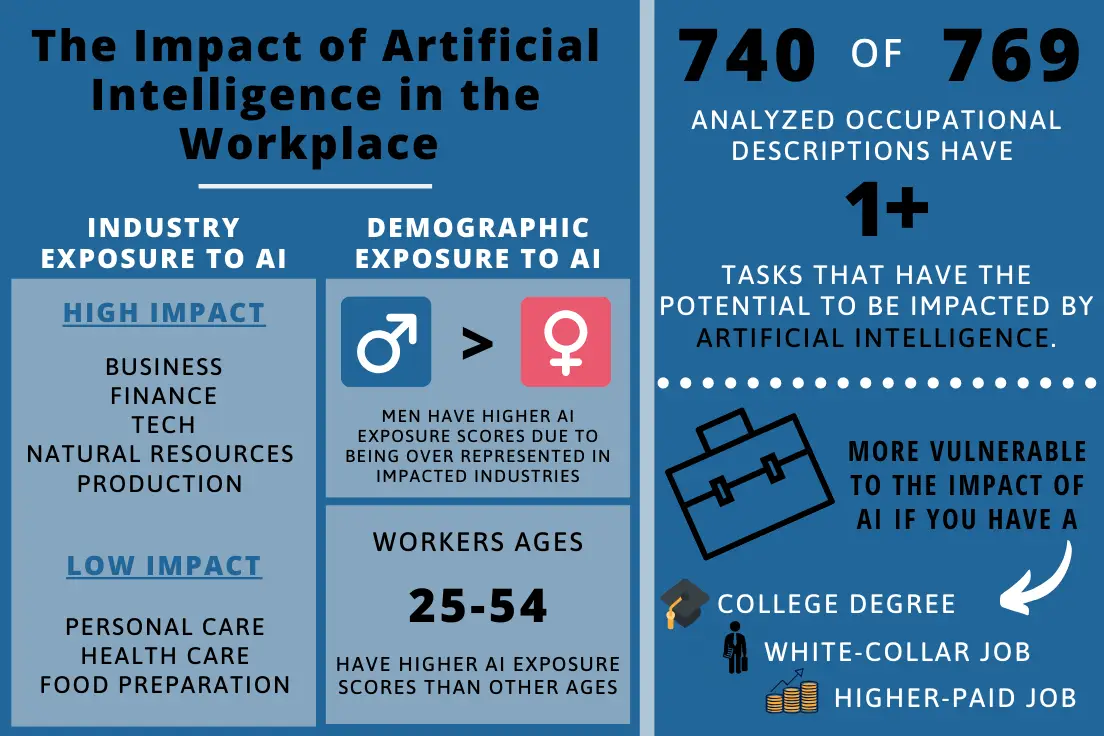How AI could revolutionize our day-to-day operations
Artificial Intelligence (AI) is a well-known topic in the media, with new applications and capabilities being announced every week. With all the excitement surrounding this emerging technology, major AI breakthroughs, from self-driving cars to intelligent robots and automation, have the potential to significantly disrupt the workforce.
Based on numerous studies, a common perception is that with the increasing implementation of AI, many jobs such as manufacturing, process, or repetitive services, will be disrupted and that this trend will devastate employment in some low-wage occupations, while allowing for job growth opportunities in the high-wage and technological sectors.
However, a recent report from Brookings entitled “What Jobs are Affected by AI? Better-paid, better-educated workers face the most exposure” revealed that higher paid positions may face greater disruption than lower paid occupations.
Previous analyses of the impacts of AI on the workforce have not focused solely on AI, but conglomerated a wide range of automation technologies to determine which jobs are vulnerable to being overtaken by this tech. This methodology put the focus on the broad effects of other automation technologies, resulting in little clarity about AI’s specific impact on occupation disruption.
The Brooking’s report is based on work done by Michael Webb, which identifies “the kind of tasks and occupations likely to be affected by particular AI capabilities.” The result of this new approach is that “While earlier waves of automation have led to disruption across the lower half of the wage distribution, AI appears likely to have different impacts, with its own windfalls and challenges. White-collar, well-paid America – radiologists, legal professionals, optometrists, and many more – will likely get no free pass on this flavor of digital disruption.”
Implications revealed by this report include:

As time progresses, we will see that segments of the workforce that were previously predicted to face minimal impact from AI will face greater workplace disruption than initially anticipated.
So what might this mean for the future?
First, AI is not simply a tool for automation purposes, but, it is a technology that will result in broad repercussions across much of society and employment. Just as the industrial revolution disrupted the workforce years ago, AI will do the same as it continues to develop and revolutionize the way that people perform their job on a day-to-day basis.
Second, since AI will likely permeate in some way in almost everything we do (work as well as leisure), we should focus more on how we can use AI to further our own activities. For example, this may mean exploring ways to incorporate AI to handle the more routine parts of our jobs so that we can be more efficient in other parts of our job and be more competitive. And/or, we use developing AI capabilities so that we can focus on higher value efforts that involve analysis, decision-making or social impact.
For more information on challenges and opportunities related to AI adoption, check out our post on Guiding the Ethics of Artificial Intelligence.

